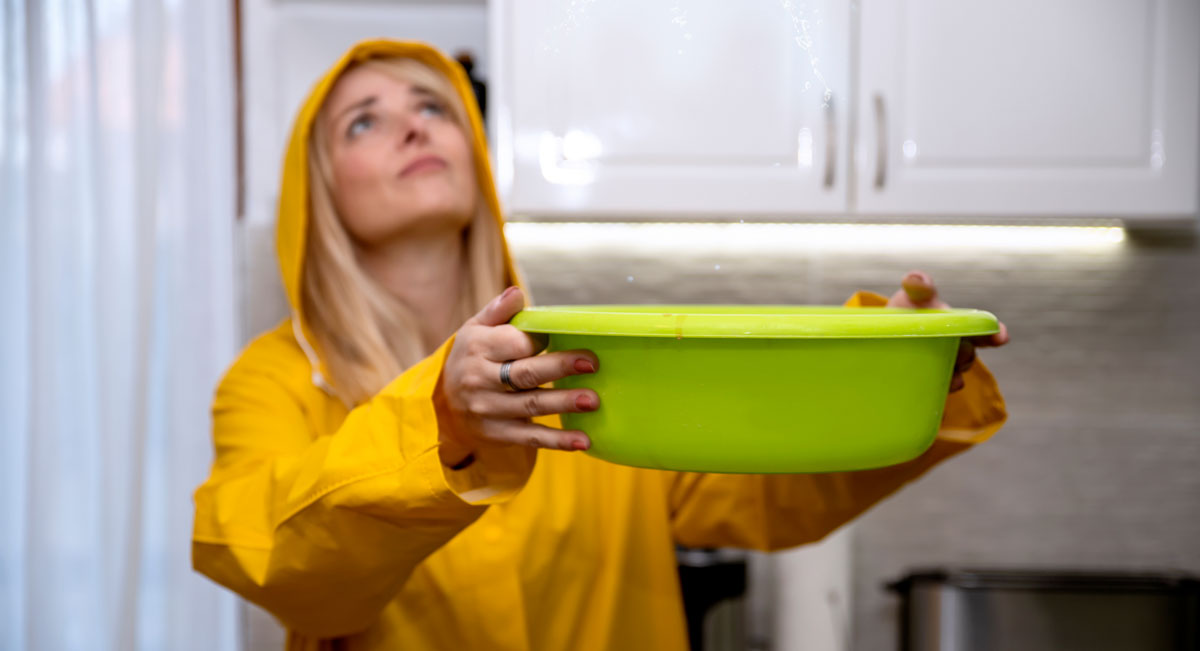What are the risk factors of a winter roof leak?
As winter settles in, the last thing any homeowner wants is a leaky roof. The combination of harsh weather conditions and potential damage can turn a simple issue into a major headache. In this blog post, we’ll explore the common causes of winter roof leaks, ways to prevent them, and what to do if you find yourself facing this unwelcome situation. We’ll also provide a list of essential supplies for temporary fixes and important safety tips for any DIY roof work. Let’s dive in!
Common Causes of Winter Roof Leaks:
- Neglect and lack of preventive maintenance: Many roof leaks during winter are the result of neglect and failure to perform regular maintenance. Paying attention to your home and conducting routine inspections can help you catch potential issues early on and prevent more significant problems down the line.
- Severe weather conditions: Winter storms can bring high winds, hail, and even falling objects like trees or branches, which can cause damage to your roof’s integrity and lead to leaks.
- Presence of animals: Animals seeking shelter from the cold may find their way into your roof, creating access points for water to infiltrate and cause leaks.
Early Signs of a Roof Leak
One of the best ways to avoid major winter roof leaks is by spotting the early signs of trouble. Keep an eye out for the following indicators:
- Ceiling cracks or stains on the drywall: These can be early signs of water seeping through the roof and damaging your ceiling.
- Swelling and contracting of building materials: Seasonal changes can cause materials to expand and contract, which can exacerbate existing leaks.
Inspecting Your Attic Space
Regularly inspecting your attic during the winter months can help you catch leaks before they cause extensive damage. Follow these steps during your inspection:
- Look for daylight shining through: Ensure that the only place you see light is at roof vents. If light is coming through other areas, it’s a clear sign of a problem.
- Check for dark staining, mold, or rotted/soft wood: These are sure signs of water infiltration and should be addressed promptly.
- Watch out for signs of animals: Bird nests, feces, and general destruction can indicate that animals have created access points for leaks.
Preventing Winter Roof Leaks
Prevention is the best defense against winter roof leaks. Take the following measures to safeguard your roof:
- Perform regular maintenance and pay attention to your home’s condition.
- Keep trees and bushes trimmed away from gutters and roof to prevent animals from finding their way in.
What to Do If You Experience a Winter Roof Leak
If you find yourself dealing with a winter roof leak, follow these steps to minimize damage and buy yourself time for repairs:
- Stay calm and assess the situation.
- Divert water to a safe location to prevent collateral damage.
- Turn off and unplug any electrical items near the water source.
- Pinpoint the leaking area and cover it with a tarp for temporary protection.
- Take photos of the affected areas for insurance claims and contractor estimates.
Items to Have On Hand for Temporary Fixes
Having the right supplies on hand can help you perform temporary fixes until professional help arrives:
- A tarp (bigger is better) to cover the leaking area.
- Fasteners, such as staples, a staple gun, 2x4s, and 16d nails, to secure the tarp.
- 1 gallon of cold patch roof tar and a trowel for temporary repairs.
- Rubber gloves for safe handling of the tar.
- A ladder or safe means of accessing the roof or attic for inspection and minor repairs.
Safety Tips for DIY Roof Work
If you plan on tackling minor roof repairs yourself, follow these safety tips:
- Start with small tasks and practice caution.
- Consider having someone on the ground for assistance.
- Investigate safety equipment for added protection.
Hiring a Professional
When in doubt or for more significant repairs, don’t hesitate to call a professional roofing contractor. Hiring a pro offers several benefits:
- Expertise and assurance of proper repairs.
- Understanding estimates and recommendations if you’re knowledgeable about your home’s condition.
- Establishing a relationship with a reliable contractor for future needs.
Winter roof leaks can be a homeowner’s nightmare, but with proper attention, preventive measures, and a few essential supplies, you can mitigate potential damage. Regular inspections and prompt action when leaks are detected can save you from major headaches and costly repairs. Remember to prioritize safety and seek professional assistance for larger repairs. By being proactive, you can protect your home from the damaging effects of winter roof leaks.
